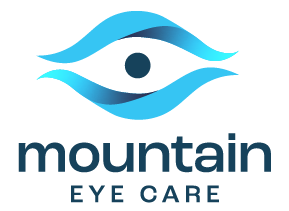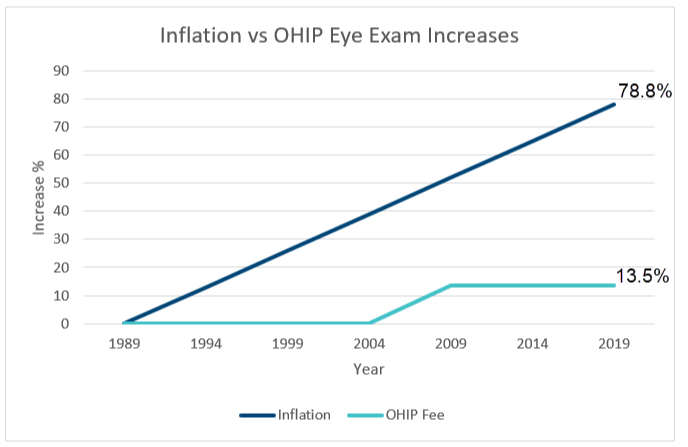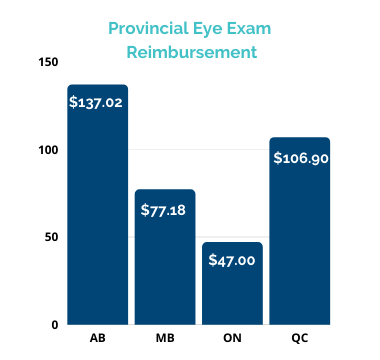Eye exam frequency for different ages
Doctors of optometry play an essential and ongoing role in ensuring the health of you and your family. We diagnose, treat, and help prevent diseases and disorders affecting the visual system, the eye, and related structures. We also assist in identifying general health conditions that are often first detected through an eye exam, provide referrals to specialists, and can help manage post-eye-surgery health. From infants to grade-schoolers through to grandparents, Optometrists not only ensure the quality of vision and eye health but the quality of life. If you have been wondering about the eye exam frequency for each stage of life, then you have come to the right place at Mountain Eye Care. Our professional team is here to help you achieve the best vision possible, and additionally, help detect any underlying health issues. In this blog, we share some information about the eye exam frequency for different ages.
Click here to learn more about our services and products at Mountain Eye Care!
Infants
Newborns have all the ocular structures necessary to see, although these are not yet fully developed. At birth, your baby can see blurred patterns of light and dark. During the first four months, their visual horizon will expand from a few centimetres to many metres. Their vision will become clearer and colour vision will begin to develop. Their two eyes will start working together. By four months of age, an infant’s colour vision is similar to an adult’s, and by the sixth month, your baby will acquire eye movement control and develop eye-hand coordination skills. For the first six months, an infant’s eyes can appear slightly crossed or out of alignment, but this is usually normal. But if your infant’s eyes appear significantly crossed or remain misaligned after six months of age, contact your Optometrist right away. Your child may have strabismus, commonly known as crossed eyes, a condition that needs to be treated with eyeglasses, contact lenses, prisms, and/or vision therapy and, in some cases, surgery. In time, if not corrected, the ignored eye will become unable to function normally and will become largely unused. This may result in the development of a lazy eye.
Preschoolers
Between ages one and two, it’s important for a child to develop good hand-eye coordination and depth perception. There are activities that can help improve these essential visual skills, such as playing with building blocks or balls of any shape and size. Children at age two enjoy listening to and telling stories. It helps them develop visualization skills and prepares them for learning to read. At this stage of their development, toddlers also like to paint, draw and colour, sort shapes and sizes, and fit or assemble pieces. These activities are all integral to their visual development.
School-age children
A school-age child’s eyes are constantly in use in the classroom and at play. For school-age children, several different visual skills must work together so they can see and understand clearly. If any of these visual skills are lacking or impaired, your child will need to work harder and may develop headaches or fatigue. Often the increased visual demands of schoolwork can make greater demands on a child’s visual skills, pointing out a vision problem that was not apparent before school. The child may not realize they have a vision problem – they may simply assume everyone sees the way they do. A vision-related problem may cause some of the symptoms described below:
- Headaches or irritability
- Avoidance of near or distance work
- Covering or rubbing of the eyes
- Tilting of the head or unusual posture
- Using a finger to maintain place while reading
- Losing place while reading
- Omitting or confusing words when reading
- Performing below their potential
Adults
For adults, a regular eye exam is an important part of maintaining your overall health and making your vision last a lifetime. Without an eye exam, critical health issues can be overlooked until it’s too late. Our eyes change as we age. In particular, people over the age of 40 may be at an increased risk for age-related eye conditions, some of which may have no visible symptoms until the condition is advanced and difficult, or even impossible, to treat. Your eyes are also windows to your overall health, and an eye exam can also uncover underlying, and life-threatening, health issues, such as Type 2 diabetes, high blood pressure, certain vascular diseases, and brain or eye tumors.
Seniors
As most people age, their vision needs change. Complications often arise, and getting expert care from a Doctor of Optometry is critical. At age 65 and older, adults should have an eye exam at least once a year. A comprehensive eye health examination should be the key to preserving your vision and making it last a lifetime. Regular exams conducted by your Doctor of Optometry give you peace of mind in knowing that your eyes are being treated by an eye health professional that can identify potential health issues early. Early identification and treatment of conditions that can often have no visible symptoms is key to protecting your sight.
For more information about eye exams or for information about our services and products, we encourage you to continue browsing through our website. Click here to find our contact information or to speak with a Mountain Eye Care representative.



